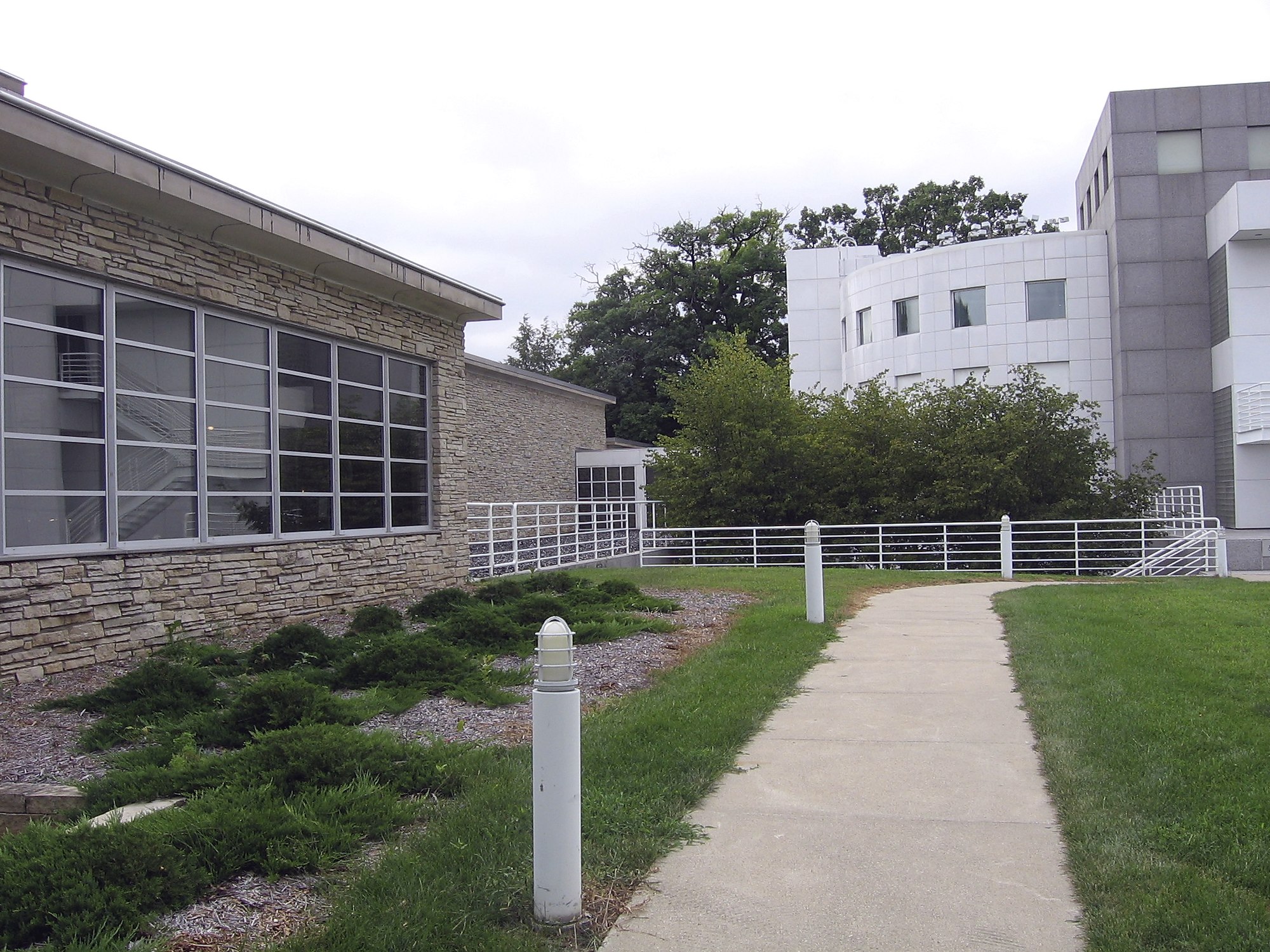More about Des Moines Art Center
Works at Des Moines Art Center

Sr. Contributor
The Des Moines Art Center isn’t the first museum to start off as a local art society, and probably not the last either, but it was the first museum to open in the United States following World War II.
In the case of the Art Center, it has its roots in the Des Moines Association of Fine Arts (DMAFA), established in 1916 for the purpose of hosting art exhibitions in Des Moines. One of the main players behind this was James Sansom (Sanny) Carpenter, a bridge builder who happened to be THE art collector in the city at the time. As the founder of the Association, he would remain president of the organization up until his death in 1939.
The impetus for the formation of the DMAFA was that word got out that James D. Edmundson, a lawyer, real estate investor, and resident of Des Moines with deep pockets, had plans to leave a substantial amount of money to go toward an art museum. But first things first: the DMAFA had to start off with a grant of $1,500 from the Greater Des Moines Committee, a group of businessmen. There were also memberships available with dues of $100 a year, a large sum for most people in 1916. It would not be enough.
The Des Moines Public Library stepped up to host the first exhibition, using a second-floor space as a gallery. The show was a big one, comprising some 300 paintings by contemporary Belgian and French artists; this traveling exhibit had been viewed previously at the Panama-Pacific International Exposition in San Francisco in 1915. While the exhibit was considered a success, at the end of that first year there were only 48 patron members in the Association, which wasn’t enough to pay all of the costs of operating their “museum.” In the following year, (and likely several more) the DMAFA was helped out by the Chamber of Commerce, the Des Moines Women’s Club, and the Greater Des Moines Committee.
The first painting that was purchased by the Association was Woodland Brook, by Edward Redfield, in 1917. The collector, James Tanner, had an eye for art that wasn’t on most other art aficionados' radars; he was responsible for the acquisition of Henry Ossawa Tanner’s The Disciples See Christ Walking on the Water in 1921, the first of four works by Tanner that the museum now has in its collection. Other early acquisitions include Ballet Girl in White by Robert Henri, and George Bellows’ Aunt Fanny. These are three of only six paintings remaining in the museum’s permanent collection that were purchased by the DMAFA back in the day.
Fast forward through the Depression, and on to the bequest of Mr. Edmundson; it detailed the formation of a corporation and board, along with where to NOT build the new museum, and the stipulation that it be free to all at least three days a week. Finally, in 1944, after a lot of “heated discussion” about what type of architecture would be appropriate, the trustees chose Eliel Saarinen to design the new building. (His son, Eero, designed the St. Louis Arch, among other structures). The design included features that are pretty common in museums today, but not so much in the 1940s: a library, auditorium, education wing, and even a kitchen for use by local groups.
After construction delays due to WW II, the museum opened in June of 1948, featuring an exhibition of American and European art from the 19th and 20th centuries, along with work from Iowa artists. It didn’t take long, however, for controversy to start brewing; there was conflict between the Art Center Association and the Edmundson board. The Association wanted to be integrated with the board, as they felt they didn’t have the authority to operate the museum to their standards, but the board trustees were pretty conservative and thought the Association liked the scary modern art a little too much. To top it off, they also found the idea of women serving on their board even scarier than modern art, so they declined to combine the two; this resulted in the operating board (Association) members resigning. This didn’t last long, though, as the board soon discovered that they needed the women to run the membership drive. By 1950, there were women serving on the board. And the museum is still free!
Sources
- Benezra, Neal. An Uncommon Vision: The Des Moines Art Center. Des Moines, IA: Des Moines Art Center, 1998.
- Hamlet, Isaac. “Anniversary Gift: Des Moines Art Center Gets $5 Million as It Prepares to Mark 75th Year.” Des Moines Register. Des Moines Register, October 13, 2021. https://www.desmoinesregister.com/story/entertainment/2021/10/13/des-mo….
- “James Sansom Carpenter House.” Wikipedia. Wikimedia Foundation, June 2, 2021. https://en.wikipedia.org/wiki/James_Sansom_Carpenter_House.
- Morain, Michael. “Artist's Stature Rises over Century.” October Gallery, April 25, 2012. https://octobergallery.com/2010/12/19/artists-stature-rises-over-centur….
- “Museum History.” Des Moines Art Center https://web.archive.org/web/20090831182149/http://www.desmoinesartcente….
- Tanzilo, Bobby. “Urban Spelunking: Des Moines Art Center's Trio of Buildings.” OnMilwaukee, April 5, 1970. https://onmilwaukee.com/articles/des-moines-art-center-spelunking.
Featured Content
Here is what Wikipedia says about Des Moines Art Center
The Des Moines Art Center is an art museum with an extensive collection of paintings, sculpture, modern art and mixed media. It was established in 1948 in Des Moines, Iowa.
Check out the full Wikipedia article about Des Moines Art Center











